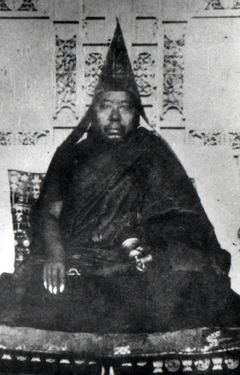The Three Types of Pilgrim
The Three Types of Pilgrim
by Kathok Situ Chökyi Gyatso
Without desire, attachment, or any particular agenda or itinerary,
With no selfish concerns, simply roaming freely from place to place
For the sake of others, benefitting impartially those to be trained—
This is the way of the very best type of pilgrim.
Following holy masters who are non-sectarian and free from faults,
Receiving their Dharma teachings without sectarian bias or conflict,
And gathering virtue in sacred places without partiality or attachment—
This too is the way of the superior pilgrim.
Through devotion for the representations of enlightened body, speech and mind,
Tirelessly amassing merit in every monastery, hermitage and sacred site,
With pure perception and without ever quarrelling or losing heart—
This is the approach of the middling type of pilgrim.
First, making grand promises and plans to travel the globe;
Then, passing by sacred sites that are reached by uphill roads;
In the end, being content with having ‘been there’ and ‘done that’—
This is one aspect of the meaningless type of pilgrimage.
Never seeing the virtues of the saṅgha, but noticing their each and every fault;
Never coming close to sacred images and texts, but viewing them from afar;
Requesting souvenirs when others are around and stealing them when they are not—
This is the second way in which a pilgrimage becomes nothing but an evil outing.
Developing wrong views towards a sacred place when feeling tired,
Or visiting a temple one day and forgetting all about it the next,
Getting angry along the way and considering it a sign of courage—
Avoid all such ‘pilgrimages’, which are merely futile forms of exertion.
In India, the sacred land of the Āryas,
Many masters still remain, hidden and apparent,
And so, filled with faith and devotion,
I prostrate and make prayers and aspirations.
| Translated by Adam Pearcey, 2006, revised 2018.
Bibliography
Tibetan Edition
kaH thog si tu chos rgyam. "gnas skor rab 'bring mtha' gsum gyi rnam dbye" in gnas yig phyogs bsgrigs. Chengdu: Si khron mi rigs dpe skrun khang, 1998. pp. 1–2.
Version: 2.3-20251021
